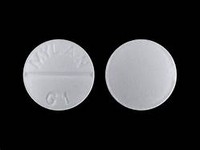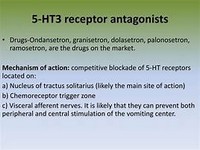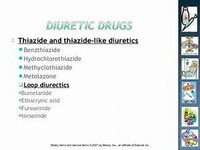methenamine hippurate

CLINICAL USE
Antibacterial agent
DOSE IN NORMAL RENAL FUNCTION
1 g every 8–12 hours
PHARMACOKINETICS
Molecular weight :319.4 %Protein binding :No data %Excreted unchanged in urine : 80–90 Volume of distribution (L/kg) :No datahalf-life – normal/ESRD (hrs) :4 DOSE IN RENAL IMPAIRMENT
GFR (mL/MIN)
20 to 50 : Dose as in normal renal function 10 to 20 : Dose as in normal renal function <10 : Avoid. See ‘Other Information’ DOSE IN PATIENTS UNDERGOING RENAL REPLACEMENT THERAPIES
CAPD :Unknown dialysability. Avoid. See ‘Other Information’ HD :Unknown dialysability. Avoid. See ‘Other Information’HDF/high flux :Unknown dialysability. Avoid. See ‘Other Information’CAV/VVHD :Unknown dialysability. Dose as in normal renal function IMPORTANT DRUG INTERACTIONS
Potentially hazardous interactions with other drugsAntibacterials: increased risk of crystalluria with sulphonamides Diuretics: effects antagonised by acetazolamide ADMINISTRATION
Reconstition
– Route
Oral Rate of Administration
–Comments
– OTHER INFORMATION
Avoid hippurate salt in renal impairment due to the risk of hippurate crystalluriaMethenamine is not recommended in severe renal impairment as urinary concentrations are too low for it to be effective Contraindicated in metabolic acidosis, severe dehydration, renal parenchymal infections and hepatic failureMethenamine hippurate.
See how to identify renal failure stages according to GFR calculation
See how to diagnose irreversible renal disease
Home









